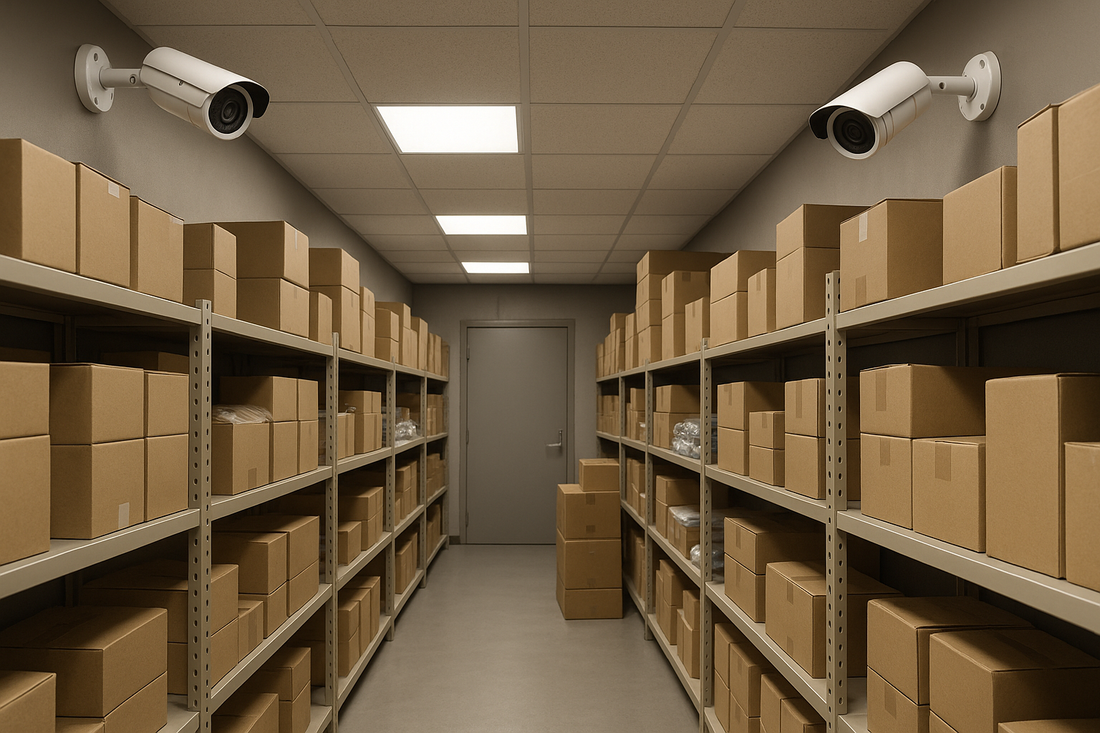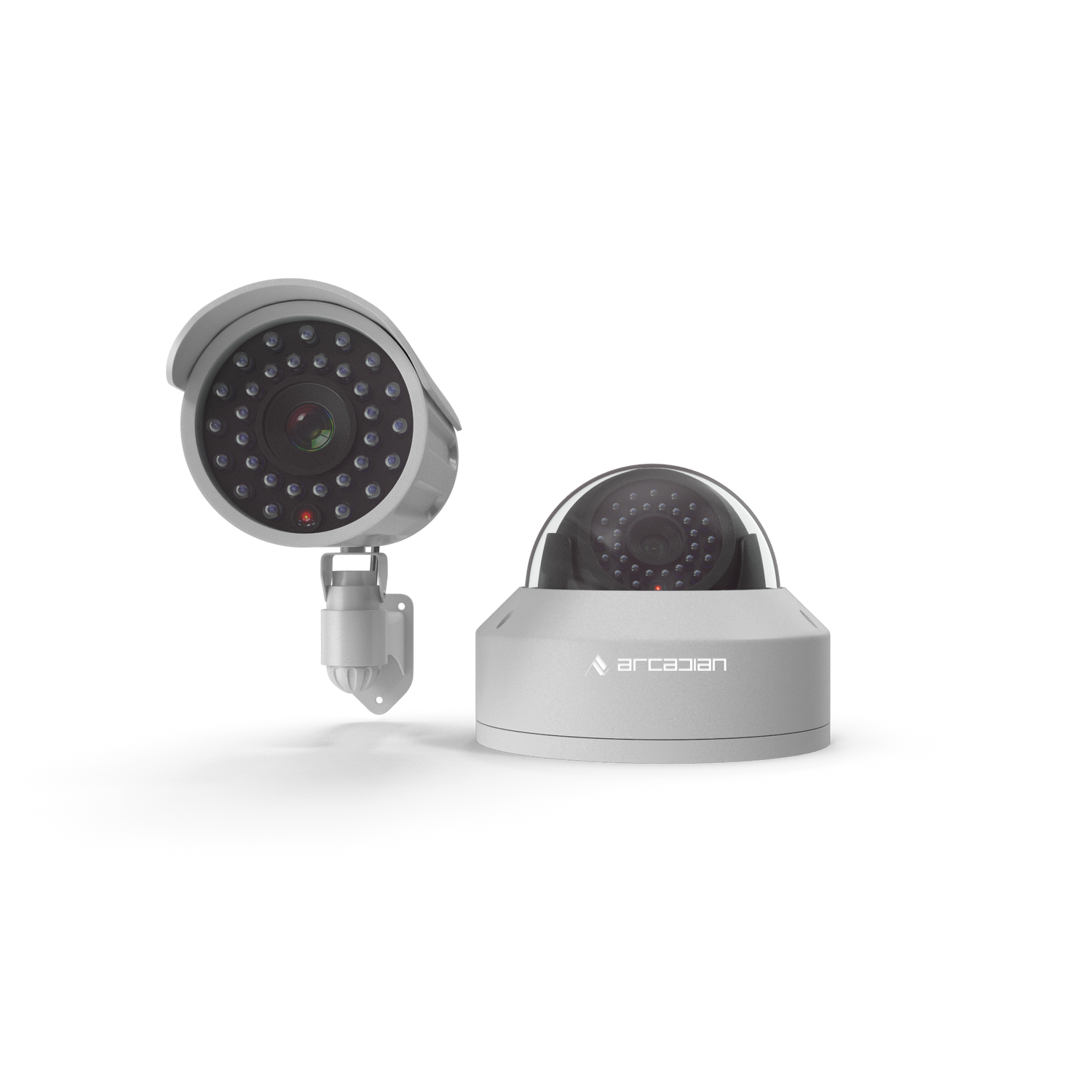Retail Security Camera Placement Guide (2025): How to Protect Every Corner of Your Store
Poor camera placement isn’t just a technical mistake—it’s an open invitation to thieves. Here’s how to protect entrances, aisles, stockrooms, and cash wraps with smart, AI-powered surveillance.

Introduction
In 2025, U.S. retailers are losing over $94.5 billion annually to theft and shrink (NRF 2024) while Canadian retailers face nearly $5 billion CAD in losses. What’s shocking? Most of this loss could have been reduced with strategic camera placement and AI-driven monitoring.
Yet, many decision-makers assume that simply installing “enough cameras” is the answer. They buy cheap kits from Lorex, Nest, or Ring, or spend millions with Verkada, Eagle Eye Networks, Milestone, or Genetec, only to realize too late that bad placement = useless analytics.
ArcadianAI solves this with a camera-agnostic platform that integrates Axis, Hanwha, Hikvision, Dahua, Avigilon, Rhombus, and any other brand, while Ranger, our AI assistant, adapts to lighting, angles, and store layouts dynamically. This is not about buying “better cameras”—it’s about placing them strategically and letting AI interpret reality.
If you don’t fix placement, expect:
-
False alarms every night.
-
Blind spots criminals already know about.
-
Analytics that miss weapons, shoplifters, and employee theft.
-
Insurance claims denied because coverage was “insufficient.”
Quick Summary / Key Takeaways
-
Bad placement = expensive blind spots.
-
Lighting and angles define analytics accuracy.
-
Entrances, aisles, stockrooms, cash wraps need specialized views.
-
AI adapts, but poor placement cripples detection.
-
ArcadianAI works with any camera brand, anywhere.
Background & Relevance
Retail crime is evolving faster than camera deployments. Organized retail crime (ORC) rings target blind spots, tailgating doors, and poorly lit storage zones. According to the NRF, 81% of retailers report increased violence during theft incidents in 2024.
With AI analytics, NDAA compliance, and insurance mandates becoming 2025 standards, retailers must rethink placement. Not just “how many cameras,” but where, why, and with what AI expectations.
Core Topic Exploration
Why Camera Placement Defines Surveillance Success
Think of your store as a chessboard. Cameras are your queens and bishops—but if you place them wrong, pawns (shoplifters) slip past.
Competitors like Verkada promise “plug-and-play” installs. But a wide-angle fisheye near the ceiling won’t catch:
-
A hand sliding merchandise into a bag.
-
A return fraud at the counter.
-
An employee skimming cash in the back.
Placement isn’t decoration—it’s strategy.
Key Areas of Retail Stores & Camera Strategies
1. Entrances & Exits
-
Goal: Facial recognition, people counting, LPR for parking lots.
-
Recommended: Dome or bullet cameras, wide FOV.
-
AI Needs: Ranger filters reflections from glass doors, tracks directionality.
-
Risk if ignored: Criminals case stores undetected; ORC crews coordinate entry/exit escapes.
2. Checkout & Cash Wraps
-
Goal: Detect transaction fraud, employee theft, weapon display.
-
Recommended: High-resolution fixed cameras.
-
AI Needs: Object detection on POS hand movements, AI alerts for suspicious linger time.
-
Risk if ignored: Employees can pocket cash or swap barcodes unnoticed.
3. Aisles & Sales Floor
-
Goal: Track loitering, concealment, sweeps by booster crews.
-
Recommended: PTZ for large aisles; fisheye for smaller ones.
-
AI Needs: Ranger adapts to seasonal layouts (Black Friday endcaps vs empty shelves).
-
Risk if ignored: Blind spots allow boosters to strip shelves in seconds.
4. Stockrooms & Inventory Areas
-
Goal: Prevent internal theft, monitor deliveries.
-
Recommended: Bullet cameras, thermal sensors.
-
AI Needs: Motion analysis in low light, AI tailgating alerts for back doors.
-
Risk if ignored: Up to 37% of shrink is internal theft (NRF 2024).
5. Employee-Only / Personal Areas
-
Goal: Respect privacy, maintain compliance.
-
Recommended: Corridor mode cameras at access points.
-
AI Needs: Ranger ensures compliance (no cameras in restrooms/locker rooms).
-
Risk if ignored: Lawsuits, labor disputes, privacy fines.
Lighting, Quality, and Analytics
-
Lighting: Poor lighting = false negatives. Ranger adjusts with HDR and low-lux AI modeling.
-
Camera Quality: 1080p minimum; 4K recommended for entrances/cash wraps.
-
Analytics Expectation: Bad placement ruins AI—angle of view matters more than megapixels.
-
Reverse Psychology Warning: If you think “the camera sees it all,” you’ve already lost.
Comparisons & Use Cases
Table: ArcadianAI vs Legacy Approaches
| Factor | Legacy NVR | VMS (Genetec, Milestone) | VSaaS (Verkada, Eagle Eye) | ArcadianAI + Ranger |
|---|---|---|---|---|
| Camera Brand Support | Limited | Limited integrations | Closed ecosystem | Truly agnostic – Axis, Hanwha, Dahua, Hikvision, Lorex, etc. |
| Placement Intelligence | None | Manual setup | Limited AI zones | Adaptive AI learns layouts dynamically |
| Lighting & Scene Adaptation | Basic IR | Software tweaks | Limited | AI-first HDR, low-light modeling |
| ORC Theft Prevention | Reactive | Dependent on operator | Delayed alerts | Real-time Ranger AI alerts |
| Cost ROI | High CAPEX | High OPEX | Vendor lock-in | Lower TCO, flexible integration |
Common Questions (FAQ)
Q1: How many cameras does my retail store need?
It depends on size, but most stores require 1 camera per 300–500 sq. ft. plus specialized units at entrances, cash wraps, and stockrooms.
Q2: Do I need 4K cameras everywhere?
No. 4K is best for entrances and cash areas. Aisles and inventory can run on 1080p if AI analytics are optimized.
Q3: Can ArcadianAI use my existing Hikvision/Dahua cameras?
Yes. ArcadianAI is camera-agnostic—we integrate with all brands, unlike closed competitors.
Q4: What’s the #1 mistake in placement?
Mounting cameras too high. You get a “bird’s eye” view, but lose facial recognition and object detection accuracy.
Q5: Can AI really prevent theft?
AI doesn’t prevent theft—but Ranger detects it early, reducing loss and enabling faster response.
Conclusion & CTA
Your store’s biggest vulnerability isn’t a lack of cameras—it’s cameras placed wrong. Criminals know it. Insurers know it. The question is: do you know it?
ArcadianAI makes sure placement, lighting, and analytics align—turning any camera brand into an intelligent guard.
👉 See ArcadianAI in Action → Get Demo – ArcadianAI
Security Glossary (2025 Edition)
AI Analytics — Algorithms that process video feeds to detect anomalies, theft, or threats.
Aisle Coverage — Camera placement ensuring every retail aisle is visible without blind spots.
Axis Communications — A leading IP camera manufacturer known for dome and PTZ units.
Blind Spot — An area not covered by surveillance due to poor placement.
Bullet Camera — A long, cylindrical camera used for directional monitoring.
Dome Camera — A compact, dome-shaped camera commonly used indoors.
Eagle Eye Networks — A cloud VSaaS provider focused on SMBs and enterprises.
Genetec — A leading VMS platform with access control integration.
Hanwha Vision (Samsung) — Manufacturer of NDAA-compliant security cameras.
Lorex / Ring / Nest — Consumer-grade camera brands with limited enterprise features.
Milestone Systems — Enterprise VMS provider with plugin ecosystem.
NVR (Network Video Recorder) — Hardware for recording IP camera feeds.
ORC (Organized Retail Crime) — Coordinated theft rings targeting retail chains.
PTZ (Pan-Tilt-Zoom) — Camera that moves and zooms to cover wide areas.
Ranger (ArcadianAI) — AI assistant that adapts video analytics in real time.
Stockroom Coverage — Specialized surveillance for back-of-house and inventory areas.
Verkada — Cloud-based VSaaS company with proprietary hardware.
VSaaS (Video Surveillance as a Service) — Cloud-hosted video management and analytics.

Security is like insurance—until you need it, you don’t think about it.
But when something goes wrong? Break-ins, theft, liability claims—suddenly, it’s all you think about.
ArcadianAI upgrades your security to the AI era—no new hardware, no sky-high costs, just smart protection that works.
→ Stop security incidents before they happen
→ Cut security costs without cutting corners
→ Run your business without the worry
Because the best security isn’t reactive—it’s proactive.







